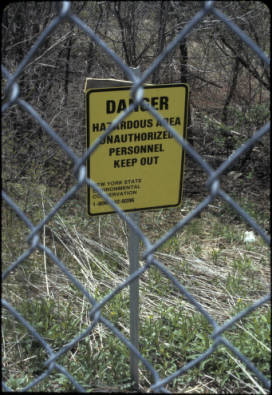We are allowing the industries that make great wealth to avoid paying for the human costs of their actions. That didn’t work the last time around ….

By Tim Redmond
SEPTEMBER 22, 2015 – I don’t think I’m the only one who has noticed a huge increase in the number of tech shuttles clogging the city’s streets. And a new study confirms that the number of shuttles is going up – and areas where there are shuttle stops have more evictions.
That confirms what pretty much everyone in the Mission knows: When you make it easier for high-paid tech workers to get a free ride to their offices, you make the surrounding housing more attractive and thus more valuable. And when you do that, in this crazy market, landlords find ways to get rid of long-term tenants so they can rent or sell to higher-paid workers.
The number of private shuttle-bus stops in the city has increased by 46 percent in the past year, the study by the Anti-Eviction Mapping Project shows. And we are getting closer to the city turning this “pilot” program into a permanent part of the city’s transportation infrastructure, the impacts are important.
The way the city is moving, this will be adopted without a full environmental impact report; the Municipal Transportation Agency argues that since the buses get commuters out of their cars, it’s good for the environment.
That, of course, misses a huge point, and it’s worth taking a larger look at.
Let’s put the tech shuttles in the context of a new report outlined in TechCrunch suggesting that one-third of the rent costs in San Francisco are due to venture capital.
These different types of findings have huge implications for the debate over who should pay for impacts to a city’s existing population, transit infrastructure and affordable housing. Should it be captured through property taxes? Land taxes? Income taxes? Impact fees for new construction? Impact fees associated with investment?
The economists have a word for what happens when a transaction or other economic activity has impacts on the larger society. It’s called “externality,” and a classic example is a factory that hires workers, pays them, produces products – and sends pollutants out of a smokestack.
The people who inhale the pollution, and get sick or die, suffer — even if they get no money from the factory. (The owners most likely live far away, where the air is cleaner).
The post-War industrial boom made the United States a wealthy country. Millions of jobs were created; great fortunes were made in the automotive, manufacturing, textile, aviation, chemical, and agricultural industries.
But the effluents from that boom killed or injured tens of thousands of people, maybe more. The current (and scary) changes in the global climate are in part a result of that era of smokestack industries (and the introduction of millions of cars to the roads).
The environmental impacts of the chemical, mining, and agribusiness industries were massive, and we are still dealing with them today.
And for the most part, during that boom era, the people and corporations who made the most money never paid a penny to cover the costs of the externalities of their economic activity.
It’s only now that we are talking about a carbon tax, or cap and trade. And even those would fall as much on consumers as on producers.
The US, like many countries, has had a bad history with environmental and health externalities. (We still seem to have problems today.) There have been attempts to regulate them (environmental protection and workplace safety laws) and lawsuits over them in the aftermath, but not so much legislative action to figure out how the responsible parties should pay – in advance, during, and after the impact of their actions.
That’s something an environmental impact report ought to cover – not just what the impacts might be, but who ought to pay to mitigate them, and how much it should cost.
So now we are in the middle of another industrial revolution, a different kind, one that’s based on ideas not on smokestacks. San Francisco is the center of it, just as Detroit and Akron and Los Angeles were among the centers of the post-War industrial era.
And this time, the externalities aren’t old-style industrial pollution – all of that happens in other countries, where products designed here are actually built. (The economist Enrico Moretti notes that if you order an Apple iPhone on the web, when it arrives only one American worker will have touched it – and that’s that UPS employee who carries it to your door.)
But there are still externalities – and in this case, they involve not only environmental concerns (more cars and buses on the streets, more people in a small area) but economic impacts. The externalities that come from allowing San Francisco and the Peninsula to become the center of the tech industry involve massive human displacement and suffering. The development that has taken place to accommodate the industry has led to vast, multibillion-dollar pressures on the local transportation and housing infrastructure.
And the industry and the people who are making great wealth from it aren’t being asked to pay.
Yes, we have (modest) fees for affordable housing and transportation. But everyone freely admits that they are inadequate to cover the full impacts.
Some of the tech companies who took advantage of a nice tax break (instead of paying fees) in the Mid-Market area are doing “community benefits agreements” to help out nonprofits in the area. But they aren’t doing anything to pay the costs of nonprofits facing much higher rent. Instead of (or along with) sending a staffer to volunteer for a few hours, they could pay a “rent impact” fee that would allow nonprofits to stay in their offices.
But no, that’s not how it works.
A group of activists has sued the city, demanding a full environmental impact report for the shuttle bus program. That’s a start – you can’t run hundreds of giant buses, with 35,000 boardings a day, without some environmental impact. (I ride a bicycle, and I see the impacts all over town. The shuttles block Muni buses, forcing people, including seniors and disabled people, to walk out into the street to get on Muni. They’re so big that they make it a bit frightening to ride even in the bike lanes on Valencia when they are passing by.)
And, according to the lawsuit, which will go to trial Nov. 13, “At the same time that the city has exempted the project from CEQA review, it is conducting a full CEQA review of Muni’s Transit Effectiveness Project. … certainly, private shuttle operators should be held to the same standards as the city’s own transit provider.”
So there will be discussion of pollution and Muni blockages and bicycles and state law.
But a real review of the program would look at the much broader issues.
All big transportation projects have economic impacts. A new BART line makes property nearby more valuable. But the shuttle buses aren’t public, so the benefits go only to a small number of people who are allowed on board. And those people are, by and large, high paid workers who want to live near shuttle stops.
The biggest beneficiaries are the landlords who own buildings near the shuttle stops. They’re making far more money off this than they would from a new Muni or BART line, which would serve a much more economically diverse population.
Who should pay for the impacts on low-income tenants who lose their homes as a pretty direct result of the shuttle bus routes and the venture capital income that has flooded the city?
As I have said many times before, it wasn’t the Invisible Hand of Adam Smith that created the tech boom and the housing crisis in San Francisco. Mayor Ed Lee and other city officials intentionally gave tech companies incentives to set up shop here in an effort to create jobs and lower the unemployment rate. (Nobody has ever looked at how many tech jobs went to currently unemployed San Franciscans as opposed to people who moved here to take them, but the evidence on the ground is pretty clear. The city’s population has soared in rough proportion to the number of tech jobs created in the region. People who lived here five years ago already had a place to live and aren’t displacing other existing residents.)
So, in the same way that some cities gave tax incentives to encourage auto plants to open (without addressing the externalities), San Francisco has encouraged the boom that is transforming the city. Peninsula cities are doing the same: You can’t build a new campus for Apple in Cupertino, taking in the property taxes – and not build any housing at all for the workforce – without creating a problem. And much of that problem has been exported to San Francisco.
I go back to my original question: Who should pay for these impacts? Are we going to do what we as a society did in the post-War era, and allow the economic equivalent of industrial pollution and health impacts with no accountability for the companies that caused them?
Or should we say that growth needs to pay for growth, and that (to follow modern environmental thinking) the creators of externalities should pay – fully, 100 percent – to mitigate them?
That would be a dramatic change in policy. It would require us to do real planning, to say that nobody can build a new office building until that developer pays the full cost of Muni service, affordable housing, and other city needs – and if the developer says that’s too expensive, then we’d wave goodbye and say we’re better off without you.
It would mean that the tech companies, instead of getting tax breaks, would have to be accountable – with cash, up front – for the impacts their wealth creation is having on the working-class people who currently live in the town they are trying to make their own.
It would mean Apple should pay the many billions of dollars it will take to build the amount of housing needed for the workers at its new campus (or the affordable housing for the people they displace).
Same goes for Twitter, and Salesforce, and Facebook.
Half a century ago, you might be able to argue that the tax money coming from the industries and the jobs they created provided governments with enough to build the buses and roads and houses that were needed. But that’s clearly not true today, in the post-Reagan, post-Prop. 13 world. The wealth gap created by this industrial boom is a disgrace, just as Love Canal, created by the last one, was a disgrace.
We as a society screwed up the externality question, badly, in the period after World War II, and we are paying the environmental consequences today. (On the other hand, in that era, union power and fair taxes made economic inequality much less of an issue; the wealth created by productivity increases was spread around; the American Middle Class was created, as was the consumer society.)
This time around the United States seems happy to let the environmental and labor problems go overseas (the IPhone is built in factories that get their electricity from fossil fuels, by workers who have no unions and work under what most Americans would consider unacceptable conditions).
But we have refused to address the economic impacts in cities like San Francisco.
Somebody has to pay. Either those of us who ride Muni pay higher fares so developers make higher profits, and those of us who are forced out of town pay more in money and time for our commutes so that tech companies can have their workers live close to shuttles – or the ones who enjoy the economic benefits have to pay for the costs.
Is that too much to ask? Isn’t it crazy not to?




